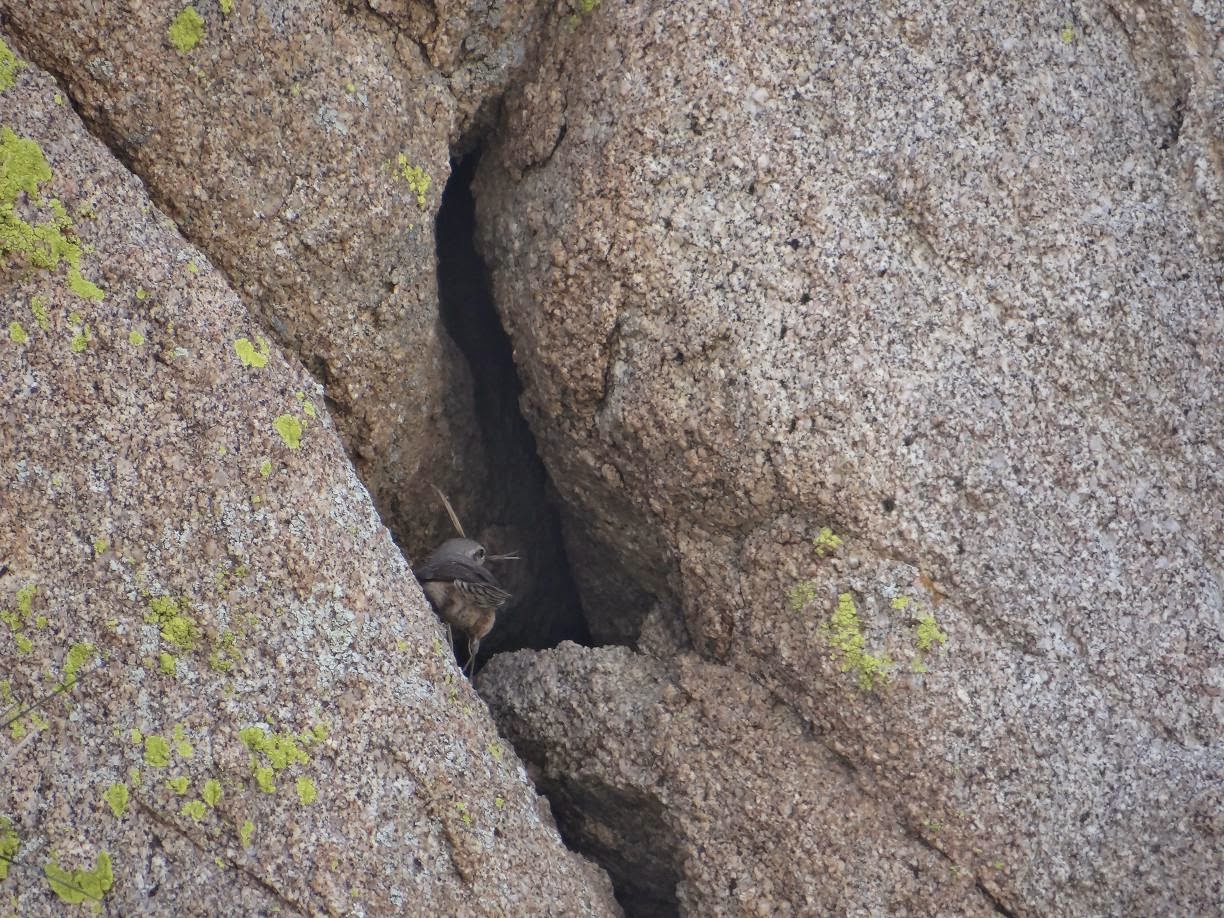One of the benefits of camping is having more time to discover the wildlife that does a great job staying hidden.
Our first sight outside of our tent early in the morning was a couple of Jack Rabbits munching under the creosote bush. Great way to start the day!
 | |
| Verdin |
Although we didn't see a lot of birds on this trip, what we did see was pretty special...nest building.
 |
| Black-throated Sparrow |
Desert birds are great at concealing their nests. The only reason we were able to spot a couple of nests is because the birds were actively building them while we watched. The first one we saw was the Black-throated Sparrow.
The male was singing away on various perches while another nearby Black-throated Sparrow, presumably his mate, was in constant motion filling its beak with nesting material and delivering it to its extremely well hidden nest.
We would have never recognized this as a nest site if we hadn't seen the Rock Wrens flying into this "belly button hole" in the boulders.
At the opening of Smuggler's Canyon, we heard the descending song of the Canyon Wren. By perching himself on the highest point above the canyon, his voice was amplified. Absolutely beautiful!
Fortunately, this was the spot we ate lunch so we were able to seen another Canyon Wren possibly the mate of the singer. She was actively searching the various ledges for a secretive nest site.
 |
| Banded Rock Lizard |
 |
| Chuckwalla |
A bonus for us was seing both the Banded Rock lizard and the Chuckwalla lizard while the Canyon Wren's voice filled the canyon. Pretty special encounter since we rarely see them.
Then, there was the blue lizard...
Patience, a pair of binoculars and a dash of good luck help to discover what's hidden in the boulders!




















































